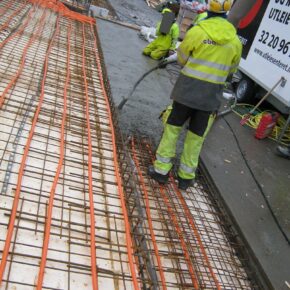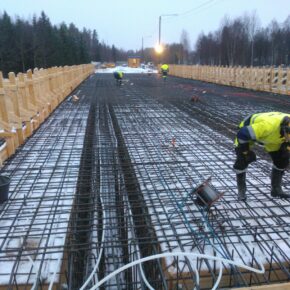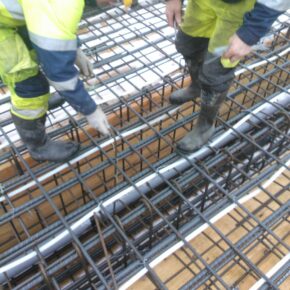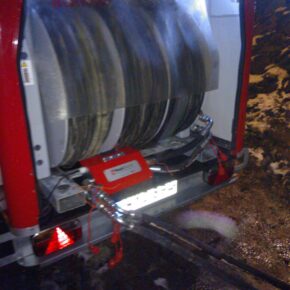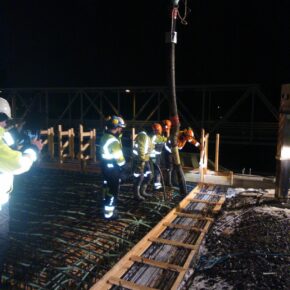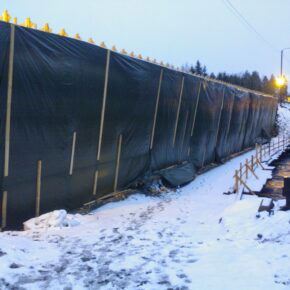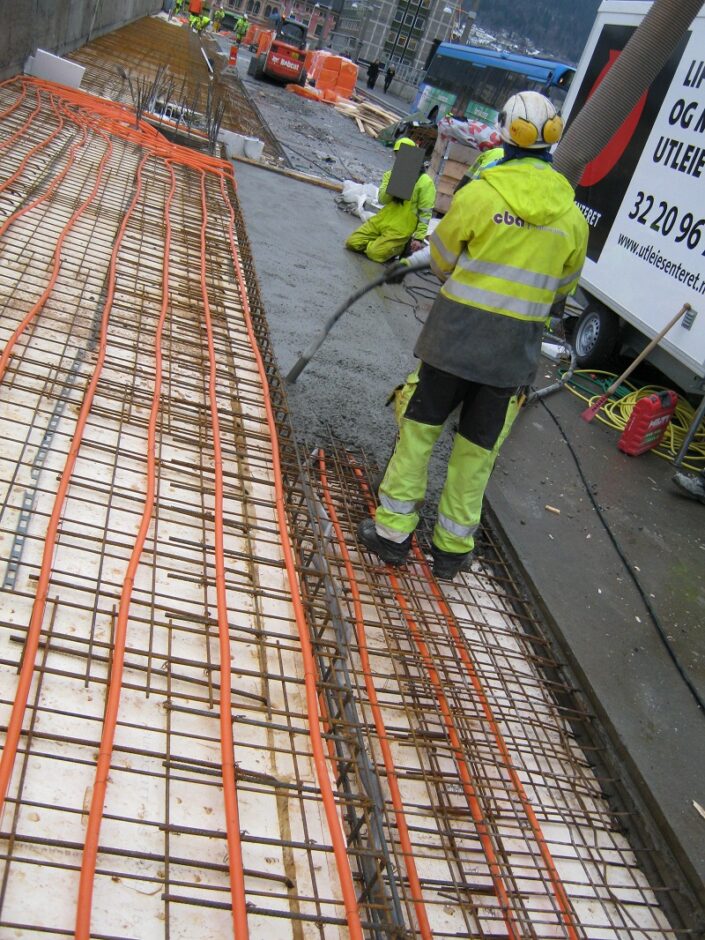
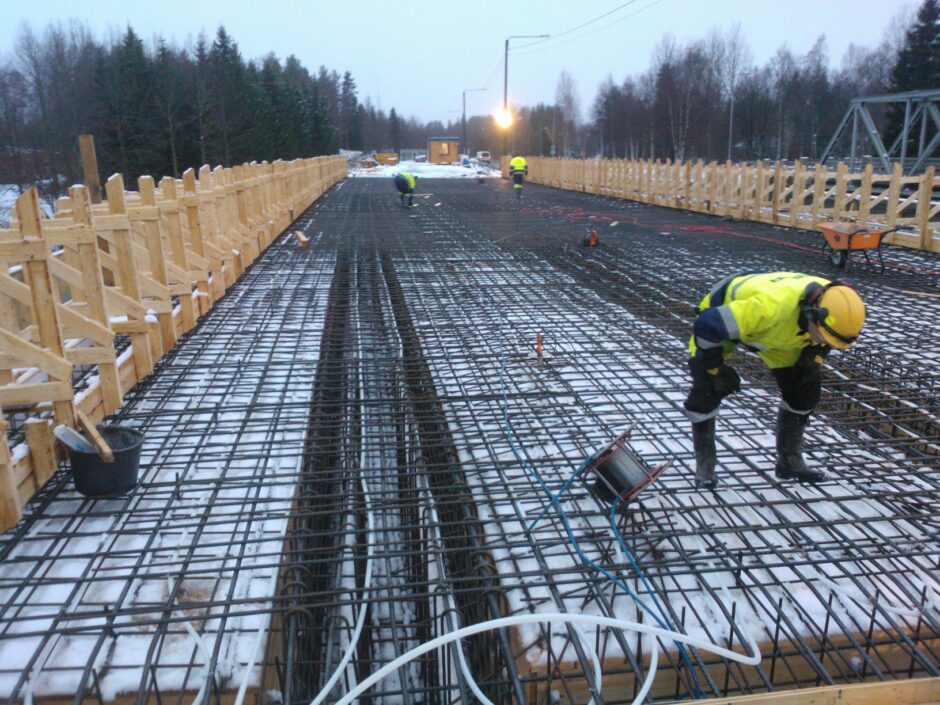
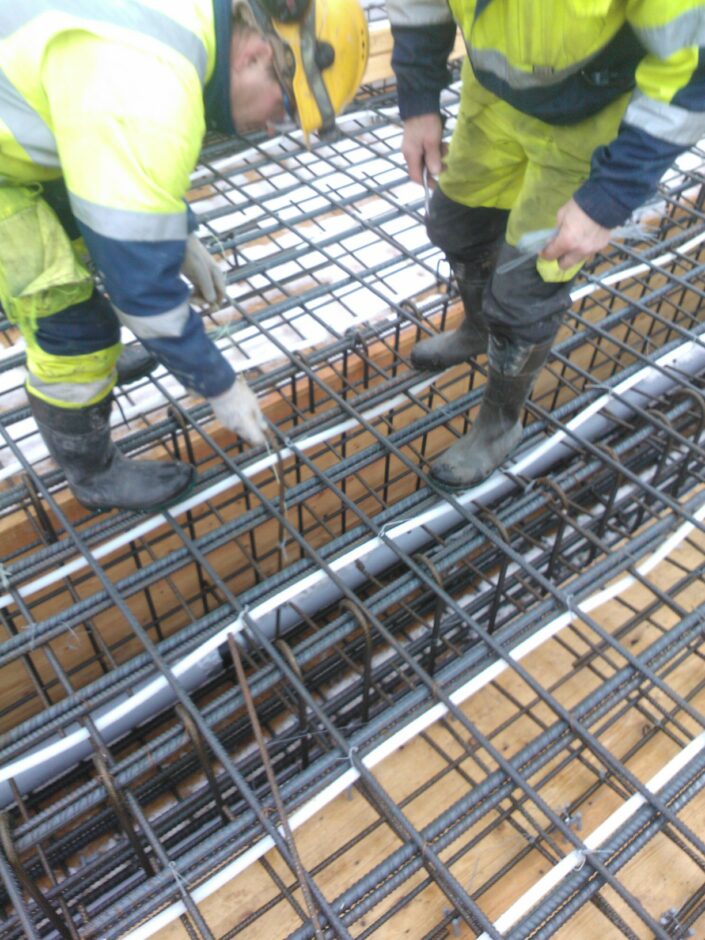
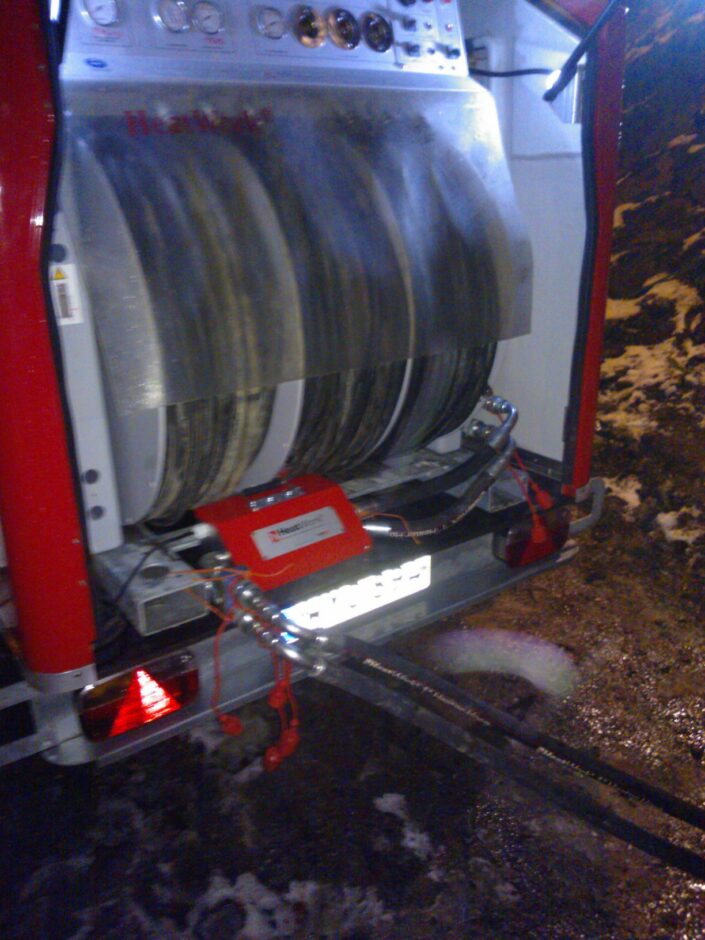
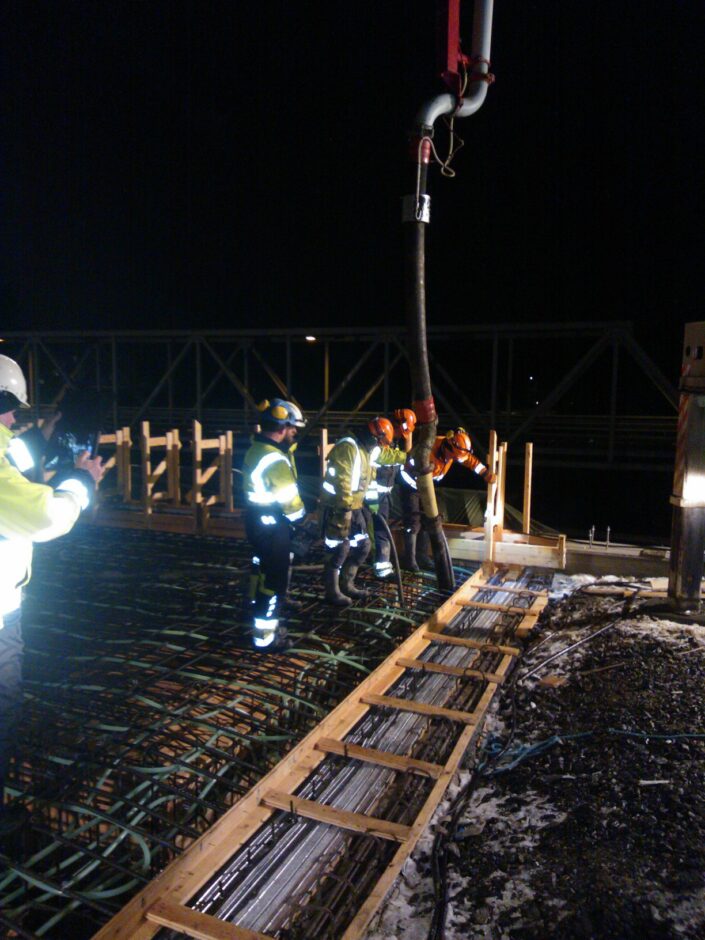
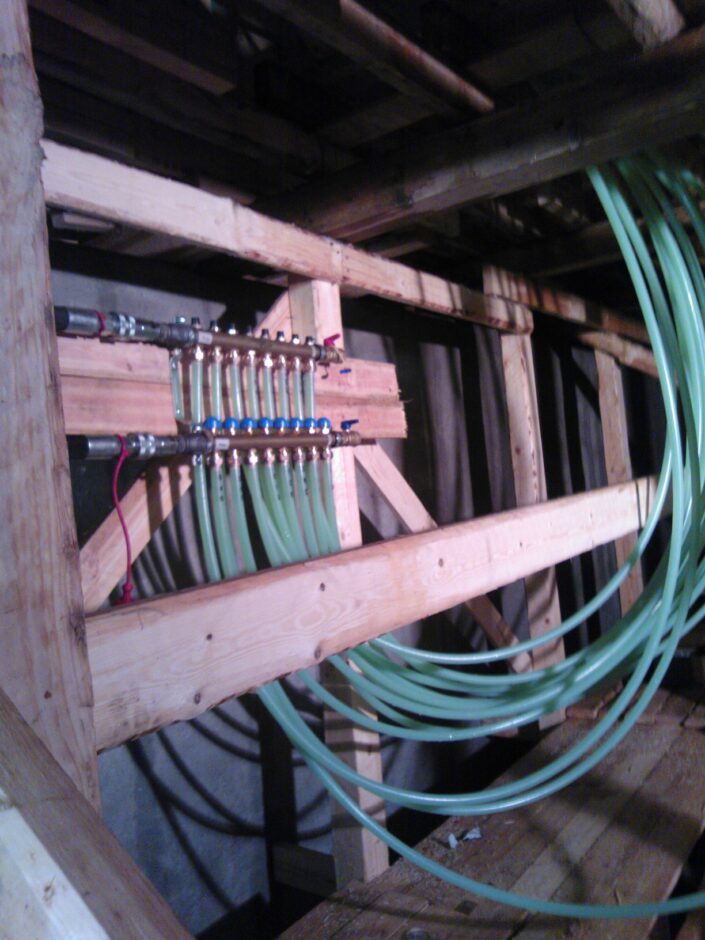

HeatWork’s machines are used for thawing ground, melting snow and ice, and pre-heating of reinforcement and formwork before casting. Large contractors have had very positive experience with using HeatWork’s solutions in their concrete work. The response has been that our method has saved lots of time and money in the projects, as well as eliciting better end result quality. It has also become far easier to document that concrete work is done pursuant to the requirements set in national standards with relation to winter casting.
The most common challenges that effect the end result of winter casting are:
- Cavities in frost-susceptible substrates
- Foundation, formwork, or construction parts that are in contact with fresh concrete have a temperature that leads to the concrete freezing
- Concrete temperatures that sink to below 0°C before attaining a firmness of at least 5MPa
- Snow and ice from foundation, formwork, and construction parts melting and contributing to increased water levels in the concrete
All of these problems can be easily avoided by using HeatWork’s Concrete System, and contractors also avoid expensive claims later.
The speed of the hardening process is also largely decided by the concrete’s temperature. If the concrete’s temperature is raised, the process occurs faster, and conversely, if the concrete’s temperature is lowered, the process occurs slower.
In fact, one doesn’t only experiences advantages in winter casting by using HeatWork Concrete System. At 35°C, hardening occurs double as fast as at 20°C. At 10°C, the speed is half of that of 20°C. This means that it takes double as much time before a piece of concrete has reached a specified demolition strength if it’s temperature has been at 10°C instead of 20°C.
Too much heat is also not advantageous for concrete work quality. In those cases where too much heat is built up during the hardening of rough concrete constructions, HeatWork Concrete System can contribute to an even distribution of the heat built up by transporting excess heat from the core of the construction out towards the border zone. In cases with high temperature development, HeatWork Concrete System can also be used for cooling.
The temperature development during the hardening process will anyway be easy to document to the construction client, as HeatWork Concrete System measures temperatures in the circulating fluid as it circulates.
- Hoses outside of formwork
- Pipes in concrete
- Hoses on floors or covers after casting
- Thawing before excavation and compression of building ground
- Snow and ice melting in foundation, formwork, and reinforcement
- Pre-heating of formwork and construction parts
- Controlled hardening of concrete
- Poured concrete in cold climates
- Heating helicopter containers
- Shotcrete – pre-heating of constructions

